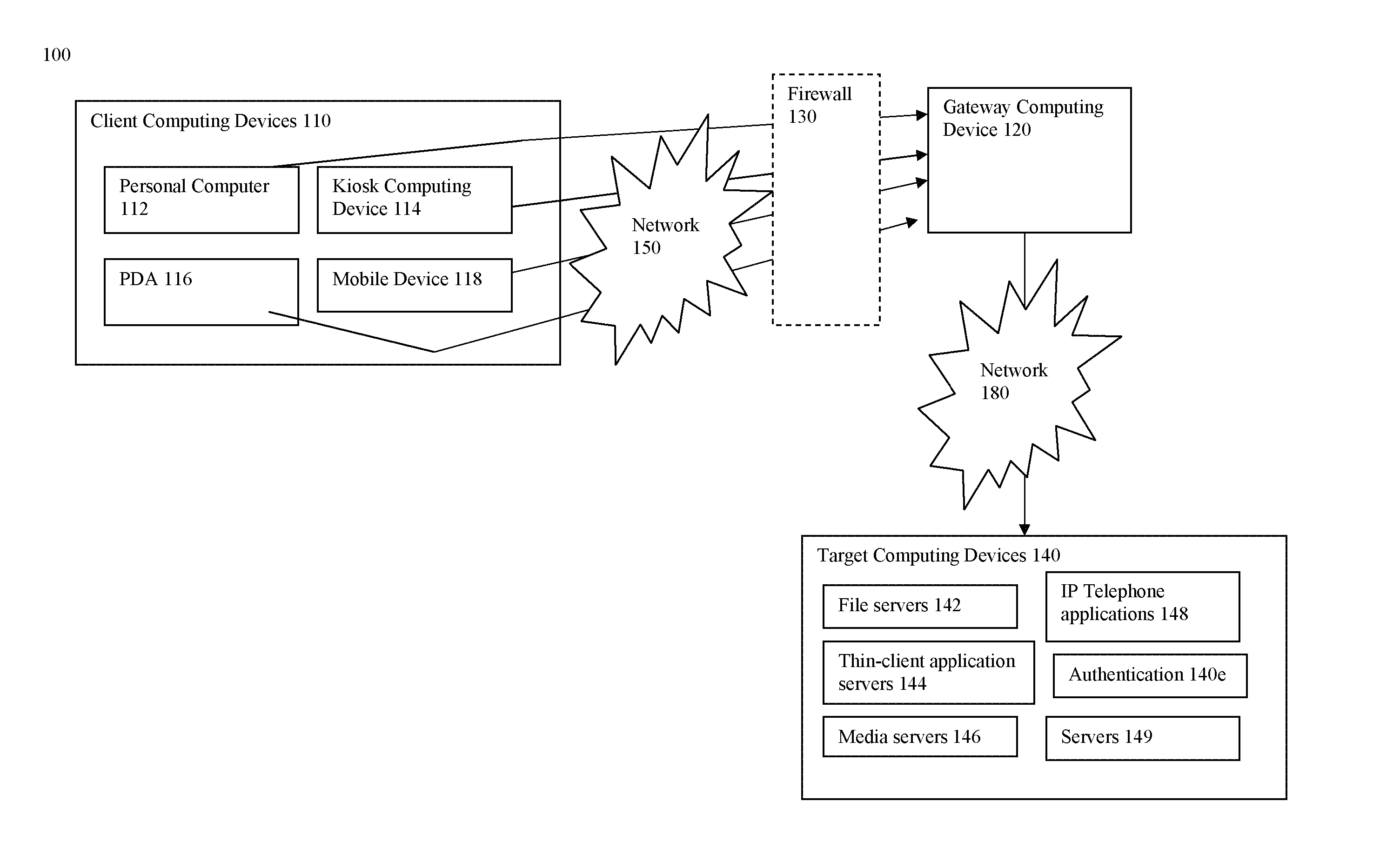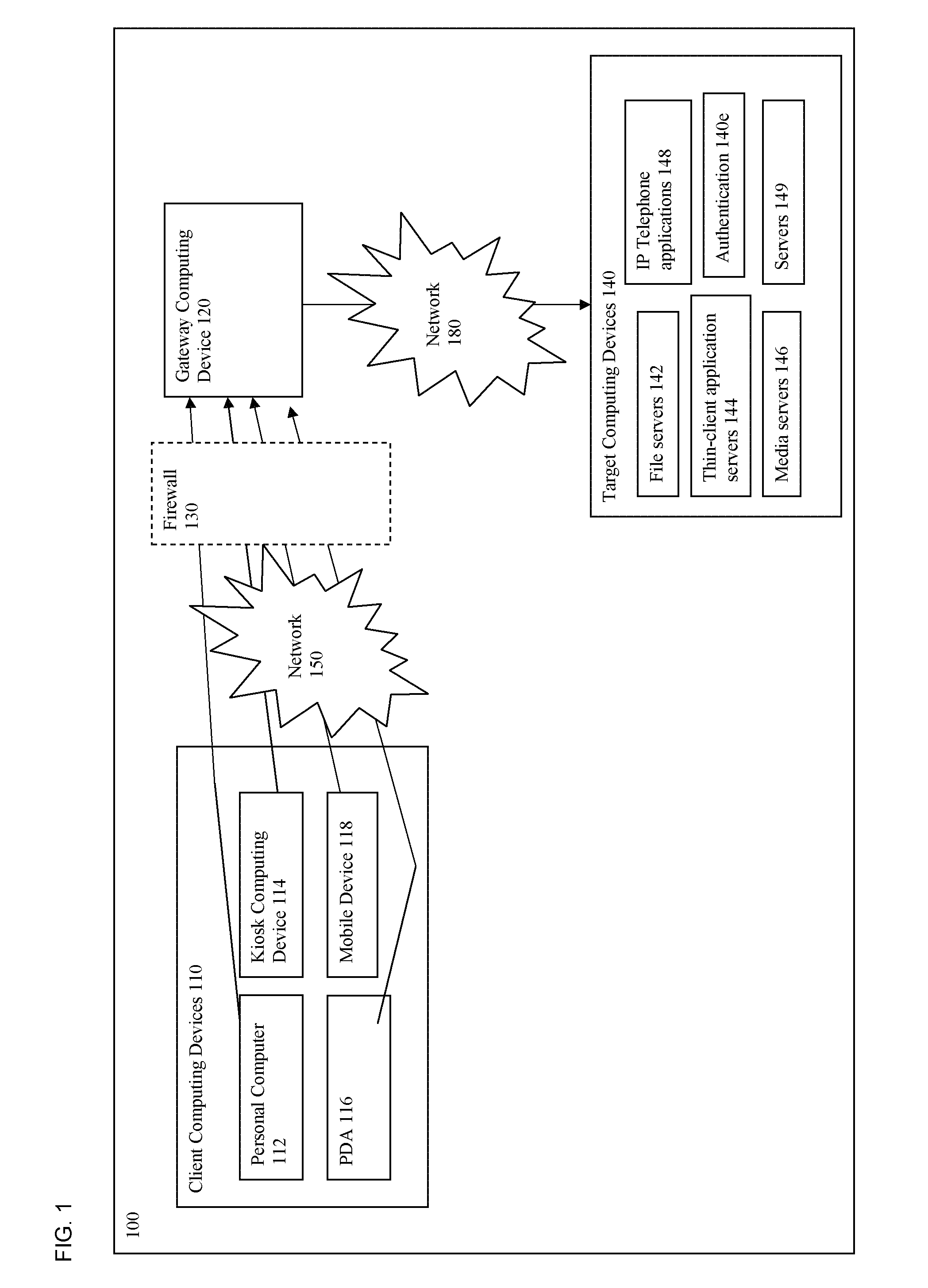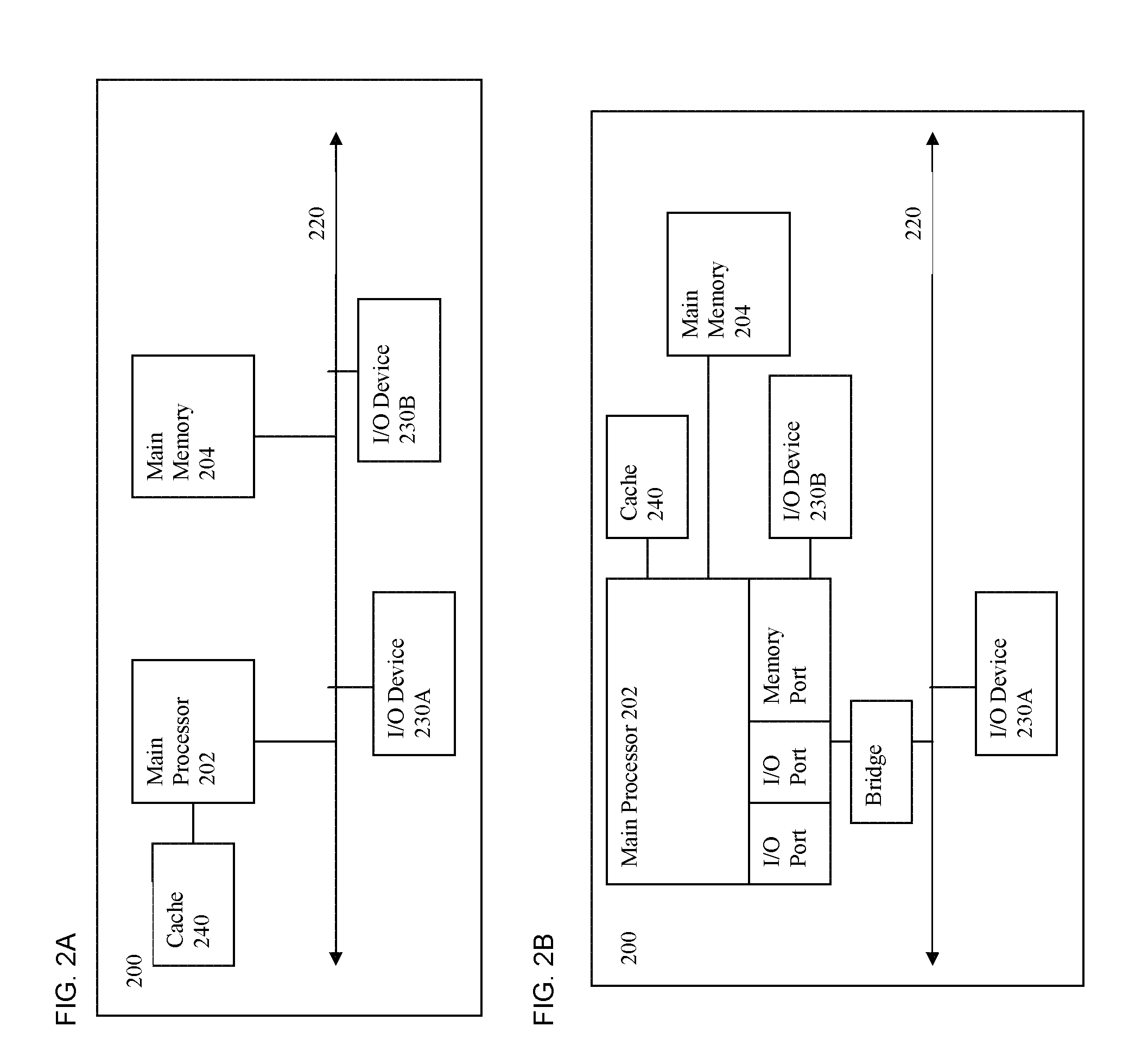A method and systems for securing remote access to private networks
a remote access and private network technology, applied in the field of methods and systems for securely accessing private networks, can solve the problems of traveling users, unable to connect back to their corporate resources, and vpns that do not work typically through firewalls, so as to relieve enterprises and organizations, improve the end user experience, and reduce the overhead and security risks of security administrators
- Summary
- Abstract
- Description
- Claims
- Application Information
AI Technical Summary
Benefits of technology
Problems solved by technology
Method used
Image
Examples
Embodiment Construction
[0029] Referring now to FIG. 1, a block diagram of a system is shown in which client computing devices 110 access a gateway computing device 120 over a first network 150. In some embodiments, the client computing devices 110 access the gateway computing device 120 through a firewall 130, shown in phantom view. In turn, the gateway computing device 120 communicates with target computing devices 140 over a second network 180. Although FIG. 1 shows only one gateway computing device 120 and one type of each of the client computing devices 110 and target computing devices 140, it should be understood that any number of those devices may be present.
[0030] As shown in FIG. 1, a client computing device 110 may include a personal computer 112, a computing kiosk 114, a personal digital assistant (PDA) 116 or cell phone 118. In some embodiments, a computing kiosk 114 is a personal computer that had been configure to allow access by multiple users, typically in a public location and usually fo...
PUM
 Login to View More
Login to View More Abstract
Description
Claims
Application Information
 Login to View More
Login to View More - R&D
- Intellectual Property
- Life Sciences
- Materials
- Tech Scout
- Unparalleled Data Quality
- Higher Quality Content
- 60% Fewer Hallucinations
Browse by: Latest US Patents, China's latest patents, Technical Efficacy Thesaurus, Application Domain, Technology Topic, Popular Technical Reports.
© 2025 PatSnap. All rights reserved.Legal|Privacy policy|Modern Slavery Act Transparency Statement|Sitemap|About US| Contact US: help@patsnap.com



